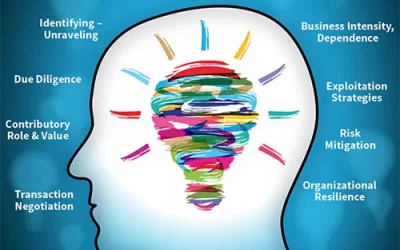Michael D. Moberly September 4, 2009
Today, for even the most conventional company, the majority of its value and competitive advantages evolve not from tangible (physical) assets, i.e., property, factories, inventory, machinery, etc. Instead company value and competitive successes evolve largely through combinations of integrated-aligned intellectual capital and intangible assets, e.g.,
1. Human capital = management teams, employees, etc.
2. Structural capital = intellectual property along with processes, methods, and best practices, etc., that deliver efficiencies, effectiveness, and contribute to value and revenue.
3. Relationship capital = all types/kinds of (internal, external) networks related to advancing brands and relationships with customers, clients, vendors, and partners, etc.
But, unlike the issuance of a patent or trademark by the government, there are no comparable confirmations for company management teams that say ‘here lies your company’s core value’ , i.e., its intangible assets and intellectual capital. The responsibility to recognize a company’s core value drivers and understand how to most effectively utilize (exploit) them is primarily a management function. That function (responsibility) however, should not be executed as periodic, snap-shots-in-time reviews, proclimations, or assessments. Rather it should be a routine (managerial) fixture that’s integrated with company stewardship, oversight, and strategic management practices.
So, what’s the benefit – ROI to management teams for doing this?
First, knowing specifically what and where a company’s value drivers are, i.e., intangible assets and intellectual capital will lay important foundations for management teams to utilize those assets more effectively, efficiently, and profitably, i.e., position, leverage, and exploit.
Second, and perhaps most importantly, as management teams communicate the above, they can more effectively articulate (internally, externally) company value, something which can seldom be gleaned/achieved solely by reviewing conventional financial reports.
Third, this level of insight allows management teams to genuinely focus on ‘future potential, not merely past performance of their company’ as characterized in conventional financial reports.
Remember, intellectual capital is integrated-aligned combinations of know how that’s convertable into useable/effective practices, methods, procedures, processes, and favorable relationships.
(For additional illuminating work in this arena see Mary Adams at I-Capital Advisors.)



